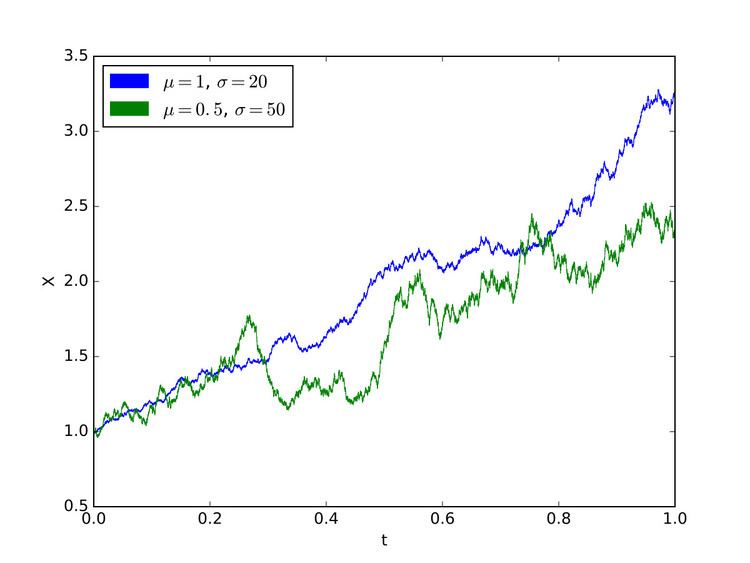 | ||
A geometric Brownian motion (GBM) (also known as exponential Brownian motion) is a continuous-time stochastic process in which the logarithm of the randomly varying quantity follows a Brownian motion (also called a Wiener process) with drift. It is an important example of stochastic processes satisfying a stochastic differential equation (SDE); in particular, it is used in mathematical finance to model stock prices in the Black–Scholes model.
Contents
Technical definition: the SDE
A stochastic process St is said to follow a GBM if it satisfies the following stochastic differential equation (SDE):
where
The former is used to model deterministic trends, while the latter term is often used to model a set of unpredictable events occurring during this motion.
Solving the SDE
For an arbitrary initial value S0 the above SDE has the analytic solution (under Itō's interpretation):
To arrive at this formula, we will divide the SDE by
Of course,
Where
Plugging the value of
Taking the exponential and multiplying both sides by
Properties
The above solution
that is the probability density function of a St is:
When deriving further properties of GBM, use can be made of the SDE of which GBM is the solution, or the explicit solution given above can be used. For example, consider the stochastic process log(St). This is an interesting process, because in the Black–Scholes model it is related to the log return of the stock price. Using Itō's lemma with f(S) = log(S) gives
It follows that
This result can also be derived by applying the logarithm to the explicit solution of GBM:
Taking the expectation yields the same result as above:
Multivariate version
GBM can be extended to the case where there are multiple correlated price paths.
Each price path follows the underlying process
where the Wiener processes are correlated such that
For the multivariate case, this implies that
Use in finance
Geometric Brownian motion is used to model stock prices in the Black–Scholes model and is the most widely used model of stock price behavior.
Some of the arguments for using GBM to model stock prices are:
However, GBM is not a completely realistic model, in particular it falls short of reality in the following points:
Extensions
In an attempt to make GBM more realistic as a model for stock prices, one can drop the assumption that the volatility (
